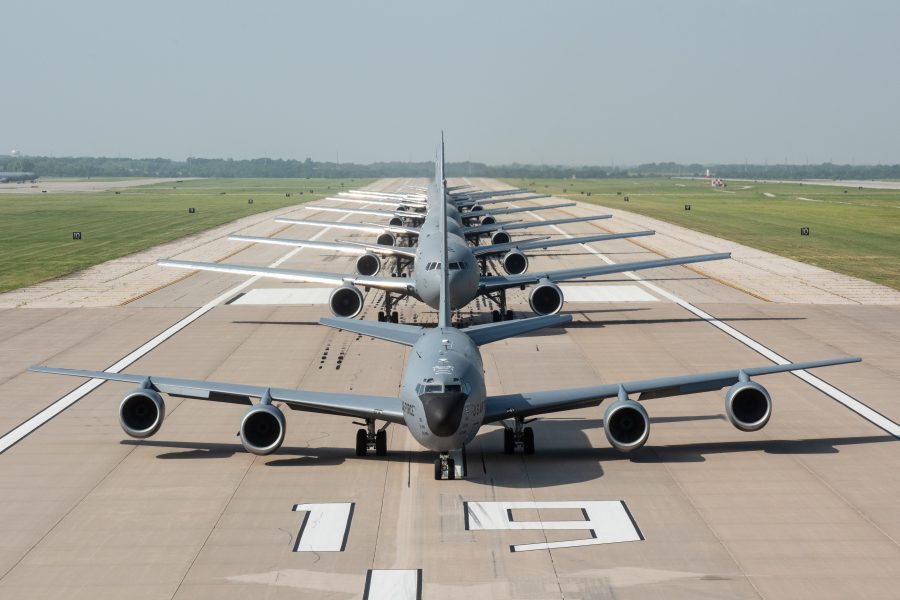The head of U.S. Transportation Command said Oct. 7 he sees new “momentum” to protect some legacy tanker aircraft from retirement. Canceling that proposed divestment would help the mobility enterprise avoid an oncoming “train wreck” of a tanker shortage while the new KC-46 is delayed, Army Gen. Stephen R. Lyons said.
The looming tanker shortage is the No. 1 problem facing the command, Lyons said during a virtual TRANSCOM and National Defense Transportation Association event. Active-duty KC-135s and KC-10s are the “most stressed in the mobility enterprise,” he said, and those aircraft are the “most relevant to any crisis or surge.”
Boeing’s KC-46 Pegasus is plagued with issues—most notably with its remote vision system—that make it unprepared to deploy until at least 2023. That’s eight years later than the company was originally expected to start delivering fully capable tankers.
“We were in a perfectly predictable train wreck, to be honest with you, because we had counted on the fielding of the KC-46, and we had banked on the divestitures of the legacy fleet to bring on the new weapon system,” Lyons said. “But you can appreciate, with the delays, that that was not going to occur. And so, we’ve gotten some positive momentum.”
He’s heartened by the House and Senate’s drafts of the 2021 defense policy bill, which would both keep most of the tankers the Air Force wants to cut. The Air Force’s budget called for retiring 29 KC-135s and KC-10s, but the House bill blocks KC-135 divestment while allowing some KC-10s to retire in phases over time. The Senate version would block the retirement altogether.
House Armed Services Committee Chairman Rep. Adam Smith (D-Wash.) said Oct. 6 that lawmakers plan to introduce a final compromise bill in the first week of December, POLITICO reported.
TRANSCOM has repeatedly called on Congress to keep older tankers flying longer until the KC-46 is ready. Lyons wrote in an unfunded priorities list submitted to lawmakers earlier this year that the Air Force’s plan would create a “dip in operational capability in day-to-day operations.”
Lyons said he is pleased with Boeing’s progress toward fixing the remote vision system, which allows Airmen to see the aircraft they are trying to refuel. A new and improved version—RVS 2.0—is expected to be available in 2023.
